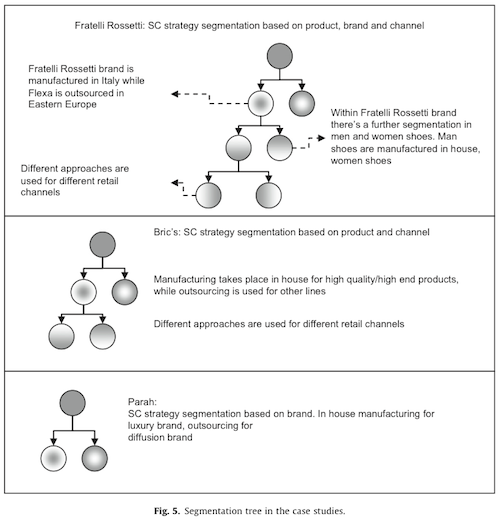Segmenting Supply Chain Strategies
For researchers and practitioners alike it is important to differentiate supply chain strategies.
Introduction
Not only Fisher (1997) showed, that there is no one-fits-all supply chain. But what are the criteria for should be used for supply chain segmentation?
Fisher focusses on on the product only, and he concludes, that a standard/functional product should be processed by a lean supply chain and innovative products by agile supply chains.
Segmentation Tree
Brun and Castelli (2008) base their research on an in-depth case study of the Italian fashion industry and a literature review. Their goal was to find a categorization for supply chain strategies and they found that strategies are segmented using a tree structure based on products, brand and distribution channel.

Conclusion
I found two major drawbacks of this study:
- The case study is located in an industry where supply chain management is viewed more as an subordinate function to marketing and communications, therefore it is quite unclear if these results also apply for other industries.
- I am missing recommendations for the right strategy for different products, channels, etc.
Brun, A., & Castelli, C. (2008). Supply chain strategy in the fashion industry: Developing a portfolio model depending on product, retail channel and brand International Journal of Production Economics, 116 (2), 169-181 DOI: 10.1016/j.ijpe.2008.09.011
Fischer, Marshall L. (1997). What is the Right Supply Chain for Your Product? Harvard Business Review, 105-116








Add new comment